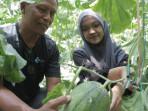East Java Travel Guide
Seeing The Migratory Birds in Mangrove Forest in Surabaya East Java
Surabaya is known for being a trade and service city, but still, there is a natural travel destination
SURYA.co.id | SURABAYA - Surabaya is known for being a trade and service city, but still, there is a natural travel destination. There is 200 hectares mangrove forest in Kecamatan Wonorejo that become a natural travel destination.
It also completes the beach ecosystem in the eastern beach of Surabaya (Pamurbaya). Now, the development of the facilities is still in processes, such as wood footpaths, monitoring tower, and deck.
There are vendors in the entrance area that serve fish and sambal dishes. There is no admission to enter the mangrove forest.
There is only the parking fee that the visitors need to pay to park their vehicles.
The visitors could go around while enjoying the alluring mangrove forest. They also could take selfies with incredible background from the mangrove forest.
There are boats too for the visitors who want to experience different vibes of mangrove forest.
Tri Rismaharani, Mayor of Surabaya, told that mangrove tourism still does not bring the beneficial effect for the local residents.
“It is still not significant, but wait for 2 years,” she said.
Not only as a travel destination, the existence of mangrove forest is very important to protect the land from flood and tsunami.
“Mangrove forest is also the perfect place for fish to do its reproduction in any beach ecosystem,” she said.
Rismaharini has the dream to make mangrove forest as an integrated travel destination with Surabaya Bridge in Kenjeran Beach with its cable cars.
“This place is also as the place for migratory birds from various origins from all over the world.”
“Surabaya has no many natural travel destination that is why this plan has to be integrated with a private company.”
Pamurbaya is one of the transit location of miscellaneous birds from various lands in this world/
According to data from bird researchers, there are Siberian, Russian, Chinese, and South Korean birds of coastal.














